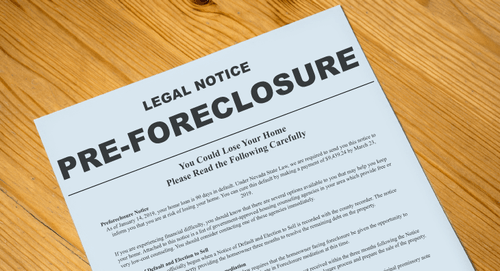The process of pre-foreclosure and foreclosure can be a confusing and stressful experience for home owners. Understanding the process and taking proactive steps can help homeowners avoid losing their homes and minimize the impact on their credit.
Pre-foreclosure occurs when a homeowner falls behind on their mortgage payments, typically by three to six months. At this point, the lender will send a notice of default, which is a legal document stating that the borrower has defaulted on the loan. The notice will include information on the amount owed and the deadline for payment.
If the borrower fails to make the required payments, the lender will move forward with the foreclosure process. Foreclosure is a legal process where the lender takes possession of the property to recover the outstanding balance on the mortgage loan. Once the foreclosure process begins, it can be difficult to stop.
During the pre-foreclosure phase, there are several steps that homeowners can take to avoid foreclosure:
- Contact the lender: The first step is to contact the lender and discuss options to avoid foreclosure. The lender may be able to offer a loan modification, forbearance, or repayment plan to help the borrower catch up on their payments.
- Sell the property: If the borrower cannot afford to keep the property, they may consider selling it before the foreclosure process begins. A short sale may be an option, where the lender agrees to accept less than the full amount owed on the loan.
- Seek assistance: There are many organizations and government programs that offer assistance to homeowners in pre-foreclosure. These programs can help negotiate with the lender, provide financial counseling, and offer resources to help homeowners stay in their homes.
If the borrower is unable to avoid foreclosure, the lender will move forward with the process. The foreclosure process can vary depending on the state and the lender’s policies, but typically involves the following steps:
- Notice of foreclosure: The lender will send a notice of foreclosure to the borrower, which typically includes information on the amount owed and the deadline for payment.
- Auction or sale: If the borrower does not pay the outstanding balance, the lender will schedule an auction or sale of the property. The property will be sold to the highest bidder, and the proceeds will be used to pay off the outstanding mortgage balance.
- Eviction: If the property is sold at auction or the lender takes possession of the property, the borrower will be evicted from the property.
Foreclosure can have a significant impact on a borrower’s credit score and financial future. It is important to take proactive steps to avoid foreclosure and seek assistance if needed. Homeowners should also be aware of their rights during the foreclosure process and consult with an attorney if necessary.
In conclusion, pre-foreclosure and foreclosure can be a difficult and stressful experience for homeowners. It is important to understand the process, seek assistance if needed, and take proactive steps to avoid losing your home. With the right support and resources, homeowners can navigate the process and minimize the impact on their credit and financial future.

